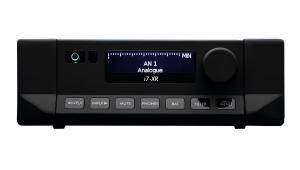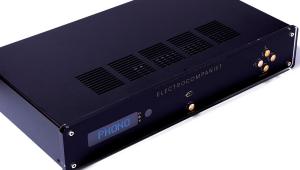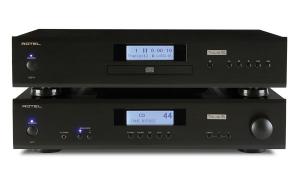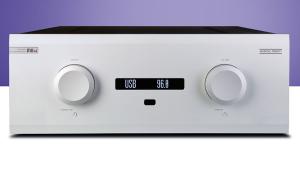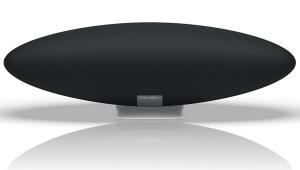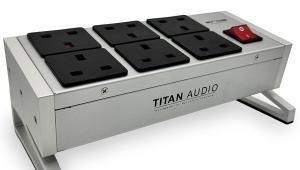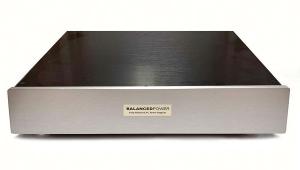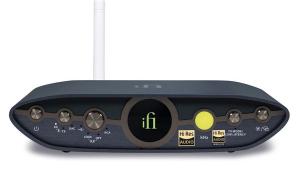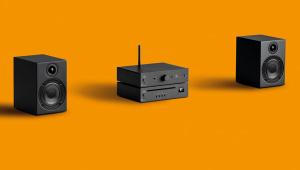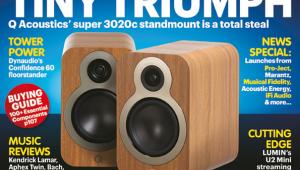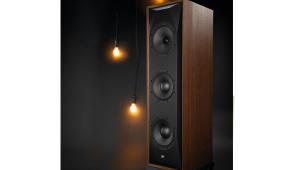Cyrus i9-XR

 When Cyrus announced the XR Series, you could be forgiven for wondering what the fuss was all about. Beyond a new display and a blacker finish, the components felt very similar to existing models. The listening experience was rather different, though. Back in HFC 473, the i7-XR put in a fine showing and now it’s the turn of the larger i9-XR.
When Cyrus announced the XR Series, you could be forgiven for wondering what the fuss was all about. Beyond a new display and a blacker finish, the components felt very similar to existing models. The listening experience was rather different, though. Back in HFC 473, the i7-XR put in a fine showing and now it’s the turn of the larger i9-XR.
Four RCA line inputs and a moving-magnet phono stage are fitted, along with a pre and line out. It’s joined by a digital board that offers two optical, two coaxial and one USB input. The sample rate handling is excellent, with 768kHz PCM and DSD512 supported via USB while the coaxial connections stretch to 384kHz. With 10 inputs in total, there’s not much that you can’t connect to the Cyrus, although some may find the omission of Bluetooth an annoyance.
The key difference between the i9 and the smaller amplifier is the power output. This is now 91W into 6ohm, which is a significant improvement over the 52W of the i7.
The power supply is considerably larger in the i9 and feeds the same ‘wideband’ design as the rest of the XR Series and is designed to present a flat frequency response from the onset of DC through to 100kHz. It’s combined with a preamp that’s been built around short signal paths and relay input selection.
Some aspects of the i9-XR will likely inspire the same slight frustration as its smaller sibling, however. For starters, the speaker terminals only accept hollow-ended 4mm plugs and they’re extremely close together. I’d personally accept a single set of terminals if it meant that more conventional plugs could be used. The headphone socket is on the rear and, while it can be switched in and out via a button on the front, this is far from ideal if you plan to connect the headphones to anything else.
These annoyances are thrown into sharp relief in part because the rest of the Cyrus is very good indeed. Without any significant changes to the metalwork and overall aesthetics that the company has used for many years, it looks and feels effortlessly more modern than the previous 6 and 8 Series models. The new display in particular is an order of magnitude easier to read than the previous version and the move to touch-panel buttons looks smarter than the older raised alternatives without them being any harder to use. The build quality is good too, with a solid overall feel and excellent finish. The remote control isn’t the prettiest going, but it offers scope to control a complete Cyrus system. The i9-XR is more expensive than the i7, but it still manages to feel good value. The prospect of there now being a BluOS-based streamer at some point in the future also adds to its appeal.
Sound quality
The ‘worth’ of the i9-XR is easier to appreciate when you stop poring over the spec and sit down and listen to it. Initially, I employ it in the same manner I tested the i7, with a USB feed from a Roon Nucleus and connected up to a pair of Focal Kanta No1 standmounts (HFC 454). The Kanta is not a hard speaker to drive. At no stage in the time I used it with the less powerful i7 did that amp struggle, even when levels were set fairly high. Even allowing for this, however, the i9-XR brings such an effortlessness and authority to the performance that it feels like a profound step forward.
Revisiting the glorious swooping instrumental post rock of God Is An Astronaut’s All Is Violent, All Is Bright on the i9-XR is illuminating. Without losing any of the traditional speed and fluency for which Cyrus amplifiers are known, the i9-XR handles big transient moments with an authority that feels some way in advance of its 91W output. This is still not the most vast and spacious sounding device you can buy at this sort of price, but within the space it delivers the performance there is no perceivable congestion. Instruments are presented with a convincing tonal realism and the balance that the i9-XR walks between refinement and excitement – even when used with the Focal speaker, which can be provoked by some electronics – is very impressive indeed.
The true ability of the i9-XR comes when you put the Focal to one side and substitute in the Neat Majistra (HFC 486) instead. The Neat is less expensive than the Kanta, but the isobaric design makes it a trickier speaker to drive. The i9-XR grips it in a way that I’ve never really seen from a Cyrus integrated before. The result is quite sensational bass as the speed of the integrated combines with the clout of the speaker for a performance that hammers its way through White Lies’ Am I Really Going To Die with stunning enthusiasm. The digital board might be unchanged from the i7-XR, but it still complements the amplifier stage beautifully. Even when pushing hard with less than pristine recordings, the Cyrus is still a detailed but impressively refined performer.
The phono stage is also a star turn. The extra power of the i9-XR really makes itself felt here because the lower gain of vinyl needs a higher volume level. The i9-XR allows for this with enough spare headroom to ensure that even the hefty live performance of Public Service Broadcasting’s Go! on their Live At Brixton album is delivered without congestion or strain. This is a phono stage that is far more than just a convenience feature. Connected to a Rega Planar 10 (HFC 456) mounting a Vertere Sabre moving-magnet cartridge, at no stage does the Cyrus feel like a device that isn’t up to the job of doing justice to this seriously capable vinyl front end.
Conclusion
The result is an amplifier that makes more sense the longer you listen to it. Even with speakers that the i7-XR sounds good with, the i9-XR is more capable still and the moment you switch to something harder to drive, the more expensive amplifier starts delivering a performance that combines unflappable confidence with enormous fun. Perhaps the most impressive aspect of what the Cyrus can do is that it is able to rival some equivalently priced designs that are analogue input only, while offering connectivity that they cannot match. This is an outstanding amplifier and one that should win many new converts to the Cyrus brand. ES
DETAILS
Product: Cyrus i9-XR
Type: Integrated amplifier
FEATURES
● Inputs: Quoted power output: 2x 91W (6ohm)
● Four line inputs via RCA
● Moving-magnet phono stage
● Digital board with: USB; 2x coaxial; 2x optical inputs
 |
Inside this month's issue:
Ruark R610 music system and Sabre-R standmount speakers, PMC twenty.23i Active, floorstanders, English Acoustics Downton preamplifier, Bluesound NODE ICON preamp/streamer, Ortofon Concorde Music Blue MM cartridge and much, much more
|








